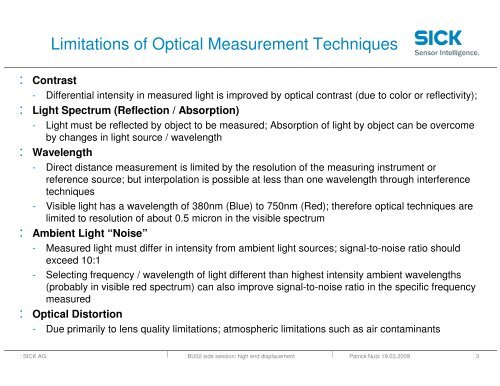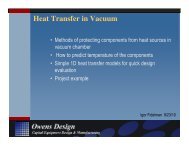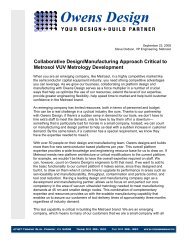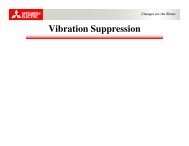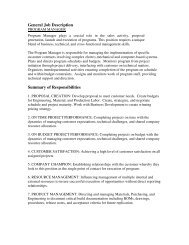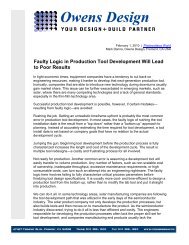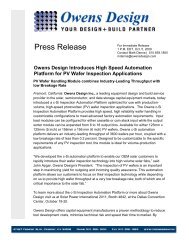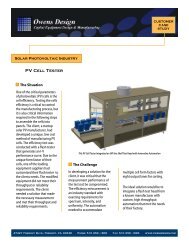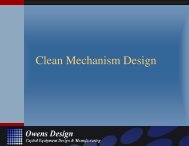Optical Glass Metrology â Techniques / Limitations - Owens Design
Optical Glass Metrology â Techniques / Limitations - Owens Design
Optical Glass Metrology â Techniques / Limitations - Owens Design
Create successful ePaper yourself
Turn your PDF publications into a flip-book with our unique Google optimized e-Paper software.
<strong>Limitations</strong> of <strong>Optical</strong> Measurement <strong>Techniques</strong><br />
: Contrast<br />
- Differential intensity in measured light is improved by optical contrast (due to color or reflectivity);<br />
: Light Spectrum (Reflection / Absorption)<br />
- Light must be reflected by object to be measured; Absorption of light by object can be overcome<br />
by changes in light source / wavelength<br />
: Wavelength<br />
- Direct distance measurement is limited by the resolution of the measuring instrument or<br />
reference source; but interpolation is possible at less than one wavelength through interference<br />
techniques<br />
- Visible light has a wavelength of 380nm (Blue) to 750nm (Red); therefore optical techniques are<br />
limited to resolution of about 0.5 micron in the visible spectrum<br />
: Ambient Light “Noise”<br />
- Measured light must differ in intensity from ambient light sources; signal-to-noise ratio should<br />
exceed 10:1<br />
- Selecting frequency / wavelength of light different than highest intensity ambient wavelengths<br />
(probably in visible red spectrum) can also improve signal-to-noise ratio in the specific frequency<br />
measured<br />
: <strong>Optical</strong> Distortion<br />
- Due primarily to lens quality limitations; atmospheric limitations such as air contaminants<br />
: SICK AG: : BU02 side session: high end displacement<br />
Patrick Nutz 19.03.2009 3


